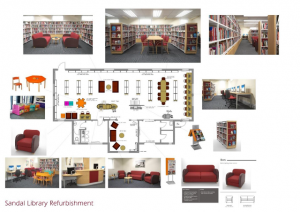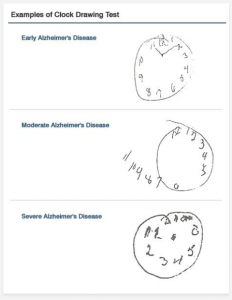Libraries in the UK are going through an unprecedented period of change – and this is leading to some fantastic initiatives to encourage new audiences. I would like to use my month of blogging to highlight some of these developments.
 Dementia-Friendly Libraries are being developed in association with the Alzheimer’s Society . Many people who work in libraries are being trained (for free) by this society to be ‘Dementia Friends’, which means they understand the needs of customers with Dementia. However, whilst libraries are well known for being friendly, welcoming and social places for many people, it is also true that many are not very easy places for people suffering from Dementia to navigate. Wouldn’t it be fantastic if libraries could be safe and welcoming for them? In Wakefield, which is a small authority in Yorkshire, the first dementia-friendly library recently opened in Sandal, with the following key features:
Dementia-Friendly Libraries are being developed in association with the Alzheimer’s Society . Many people who work in libraries are being trained (for free) by this society to be ‘Dementia Friends’, which means they understand the needs of customers with Dementia. However, whilst libraries are well known for being friendly, welcoming and social places for many people, it is also true that many are not very easy places for people suffering from Dementia to navigate. Wouldn’t it be fantastic if libraries could be safe and welcoming for them? In Wakefield, which is a small authority in Yorkshire, the first dementia-friendly library recently opened in Sandal, with the following key features:
- No reflective surfaces. These can confuse and disorientate.
- No patterns in the furnishings. These can cause stress.
- Clearly defined entrances, exits and wall edges. Being sure about how to get out is really important.
- Appropriate signage. Symbols and pictures can really help.
- Appropriate furniture. This might sound obvious, but chairs and tables that look like chairs and tables, rather than futuristic ‘pods’.
- Good colour choice and lighting. Deep reds are good, and oak finishes are warm and friendly.
- Reminiscence sessions and displays. These can be low-key events with donated objects that remind people about the past and provide great talking points, and digital photos are fantastic.
- A good clock. Preferably very big and clear, and displaying day, morning/afternoon as well as time.

Sandal Library’s new clock, with changing display screens which also show the date, and the time in other formats
The wonderful thing about Sandal library is that the public have no idea that it’s been specifically designed to aid dementia sufferers – but these small steps make the world of difference.
There is a presentation about this library online, written by Andy Wright and presented at a CILIP conference last year.


Hi Gyda, thanks for your positive comments. We like to try and do everything we can to encourage a welcoming environment for everyone, and I’m really excited to see new projects which challenge perceptions and think ‘outside the box’! Best wishes.
Happy to hear about your wonderful projects. I’ have been retirered now for ten years but before that I started library services to persons with dementia living in homes for the elderly. I had great success
with music, illustrated books and books with short stores to be read aloud.
But to invite this group of borrowers to the library is a great idea.
Good Luck with your future work!
Best regards
Gyda Skat Nielsen
Denmark